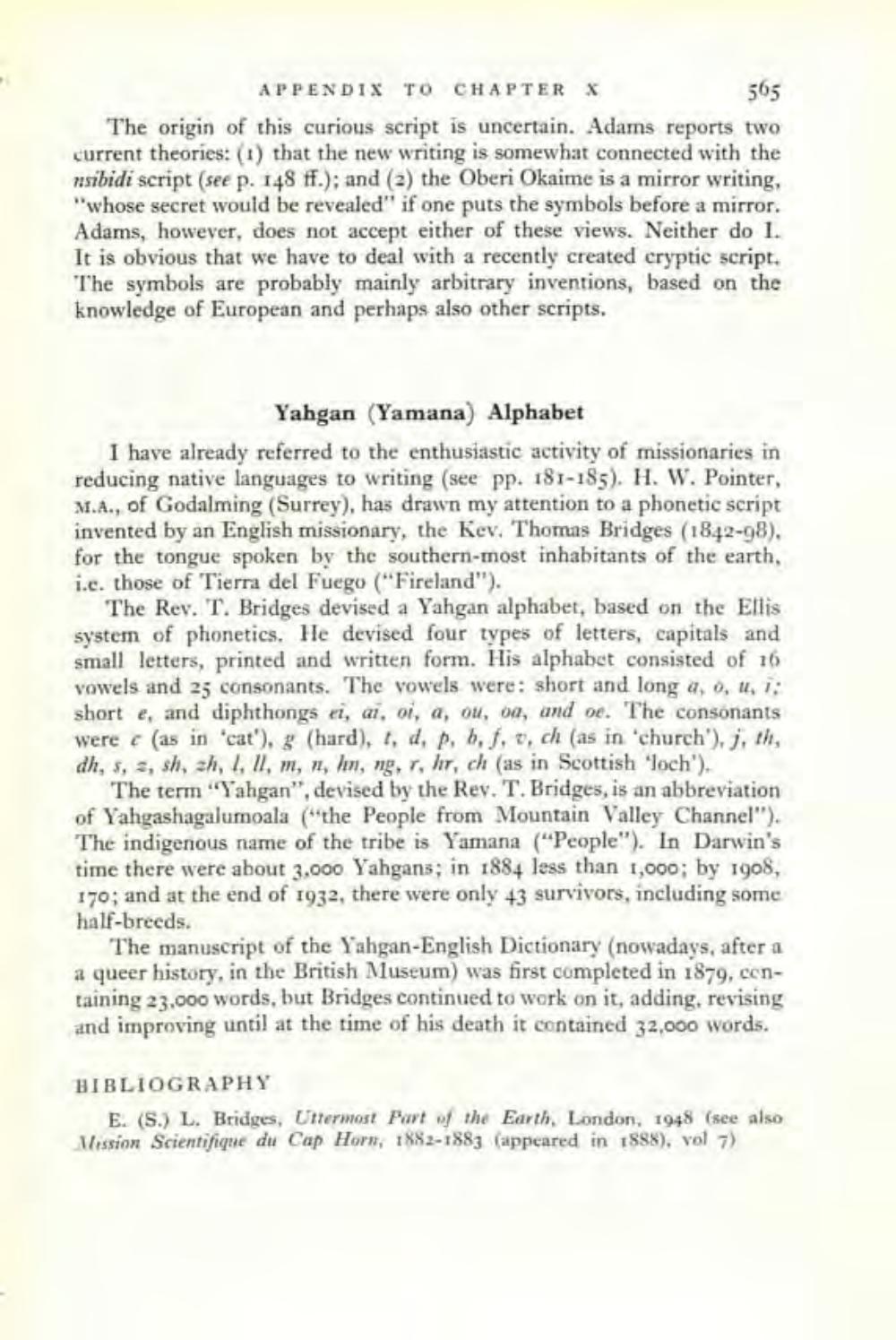________________
APPENDIX TO CHAPTER X
565 The origin of this curious script is uncertain. Adams reports two current theories: (1) that the new writing is somewhat connected with the nisibidi script (see p. 148 ff.); and (2) the Oberi Okaime is a mirror writing, "whose secret would be revealed" if one puts the symbols before a mirror. Adams, however, does not accept either of these views. Neither do 1. It is obvious that we have to deal with a recently created cryptic script. The symbols are probably mainly arbitrary inventions, based on the knowledge of European and perhaps also other scripts.
Yahgan (Yamana) Alphabet I have already referred to the enthusiastic activity of missionaries in reducing native languages to writing (see pp. 181-185). H. W. Pointer M.A., of Godalming (Surrey), has drawn my attention to a phonetic script invented by an English missionary, the Kev. Thomas Bridges (1842-98), for the tongue spoken by the southern-most inhabitants of the earth. i.c. those of Tierra del Fuego ("Fireland").
The Rev. T. Bridges devised a Yahgan alphabet, based on the Ellis system of phonetics. He devised four types of letters, capitals and small letters, printed and written form. His alphabet consisted of 16 vowels and 25 consonants. The vowels were: short and long a, 0, 1, 1: short e, and diphthongs ei, ai, oi, a, ou, ou, and e. The consonants were c (as in 'cat), g (hard), I, d, p, h, j, 0, ch (as in 'church), ), th, dh, f, s, sh, zh, I, II, m, n, lm, ng, r, lr, ch (as in Scottish 'loch').
The term "Yahgan", devised by the Rev. T. Bridges, is an abbreviation of Yahyashagalumoala ("the People from Mountain Valley Channel"). The indigenous name of the tribe is Yamana ("People"). In Darwin's time there were about 3.000 Yahgans; in 1884 less than 1,000; by 1908, 170: and at the end of 1932, there were only 43 survivors, including some half-breeds.
The manuscript of the Yahgan-English Dictionary (nowadays, after a a queer history, in the British Museum) was first completed in 1879, ccntaining 23,000 words, but Bridges continued to work on it, adding, revising and improving until at the time of his death it contained 32,000 words.
BIBLIOGRAPHY
E. (S.) L. Bridges, Ultermost part of the Earth. London, 1948 (see also Mession Scientifique du Cap Horn, 1882-1883 (appeared in 1888), vol 7)




